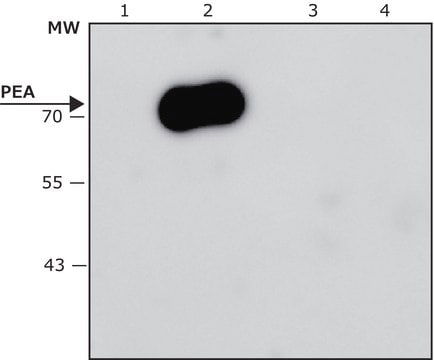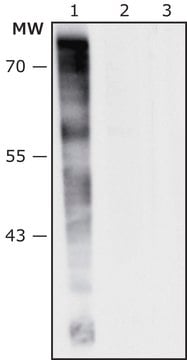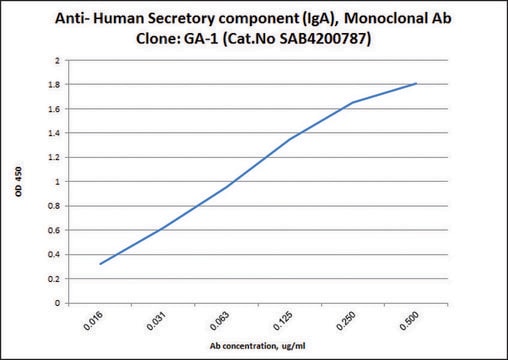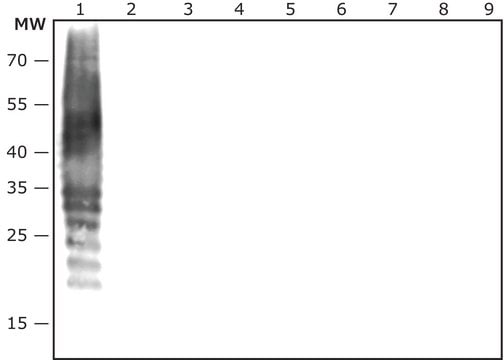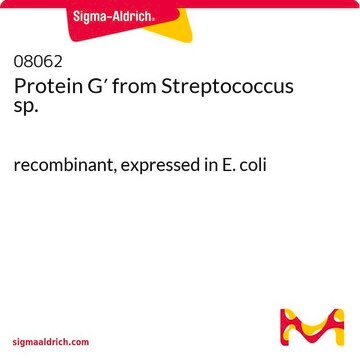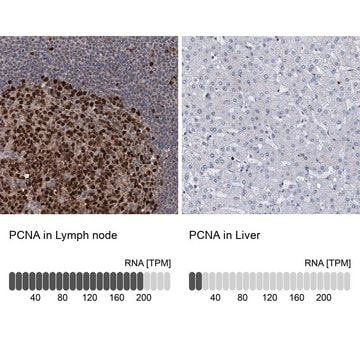SAB4200868
Anti-Enterococcus faecalis antibody produced in rabbit
IgG fraction of antiserum
Zaloguj sięWyświetlanie cen organizacyjnych i kontraktowych
About This Item
Kod UNSPSC:
12352203
NACRES:
NA.43
Polecane produkty
Poziom jakości
Postać
liquid
reaktywność gatunkowa
(Enterococcus faecalis)
stężenie
~1 mg/mL
Warunki transportu
dry ice
temp. przechowywania
−20°C
docelowa modyfikacja potranslacyjna
unmodified
Opis ogólny
Enterococcus faecalis is a gram positive, non-motile, facultative anaerobic, coci-shaped bacterium.1,2 It is a commensal bacterium of the human gut and a major opportunistic pathogen in susceptible hosts.1 E. faecalis is the third most common pathogen associated with hospital-acquired infections.2 E. faecalis inhabits the gut in 80% of healthy adultsand is also a part of the oral cavity normal flora in 20% of the adult population. In addition, E. faecalis was also identified in the human urinary tract.1
Specyficzność
Anti-Enterococcus faecalis antibody recognizes E. faecalis lysate and whole dead bacteria
Zastosowanie
The antibody may be used in various immunochemical techniques including Immunoblotting. Detection of the E. faecalis bands by Immunoblotting is specifically inhibited by the immunogen.
Działania biochem./fizjol.
E. faecalis contributes to the host in several ways, such as, competing with pathogen bacteria and preventing them from reaching the gut epithelia, prevention of intestinal epithelial barrier leakage and provision of protection from pathogens to the young infant through breast milk consumption.1,3-5
Moreover, E. faecalis also has many effects on the immune system that are beneficial to the host, such as, promoting the secretion of anti-inflammatory cytokines IL-10 and TGF-ß and induction of IgA production.1,6,7
However, when the homeostasis in the gut and mucus barrier is disrupted, especially in susceptible individuals such as in inflammatory bowel diseases (IBD) patients, or upon antibiotic administration, E. faecalis might become an opportunistic pathogen. In such case, the bacteria population overgrows and translocates through the mucus barrier to reach the epithelial cells of the gut where it can enter the bloodstream and the lymphatic system and cause severe inflammation.
Moreover, E. faecalis also has many effects on the immune system that are beneficial to the host, such as, promoting the secretion of anti-inflammatory cytokines IL-10 and TGF-ß and induction of IgA production.1,6,7
However, when the homeostasis in the gut and mucus barrier is disrupted, especially in susceptible individuals such as in inflammatory bowel diseases (IBD) patients, or upon antibiotic administration, E. faecalis might become an opportunistic pathogen. In such case, the bacteria population overgrows and translocates through the mucus barrier to reach the epithelial cells of the gut where it can enter the bloodstream and the lymphatic system and cause severe inflammation.
Postać fizyczna
Supplied as a solution in 0.01 M phosphate buffered saline pH 7.4, containing 15 mM sodium azide as a preservative.
Przechowywanie i stabilność
For continuous use, store at 2-8°C for up to one month. For extended storage, freeze in working aliquots. Repeated freezing and thawing is not recommended. If slight turbidity occurs upon prolonged storage, clarify the solution by centrifugation before use. Working dilution samples should be discarded if not used within 12 hours.
Oświadczenie o zrzeczeniu się odpowiedzialności
Unless otherwise stated in our catalog our products are intended for research use only and are not to be used for any other purpose, which includes but is not limited to, unauthorized commercial uses, in vitro diagnostic uses, ex vivo or in vivo therapeutic uses or any type of consumption or application to humans or animals.
This page may contain text that has been machine translated.
Kod klasy składowania
12 - Non Combustible Liquids
Klasa zagrożenia wodnego (WGK)
nwg
Temperatura zapłonu (°F)
Not applicable
Temperatura zapłonu (°C)
Not applicable
Certyfikaty analizy (CoA)
Poszukaj Certyfikaty analizy (CoA), wpisując numer partii/serii produktów. Numery serii i partii można znaleźć na etykiecie produktu po słowach „seria” lub „partia”.
Masz już ten produkt?
Dokumenty związane z niedawno zakupionymi produktami zostały zamieszczone w Bibliotece dokumentów.
Nasz zespół naukowców ma doświadczenie we wszystkich obszarach badań, w tym w naukach przyrodniczych, materiałoznawstwie, syntezie chemicznej, chromatografii, analityce i wielu innych dziedzinach.
Skontaktuj się z zespołem ds. pomocy technicznej